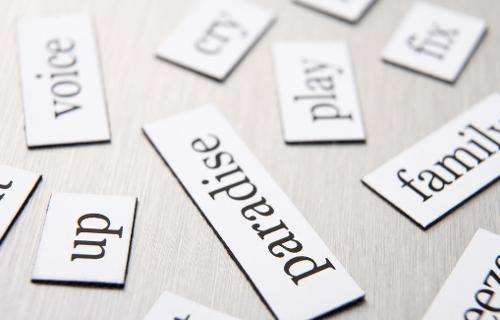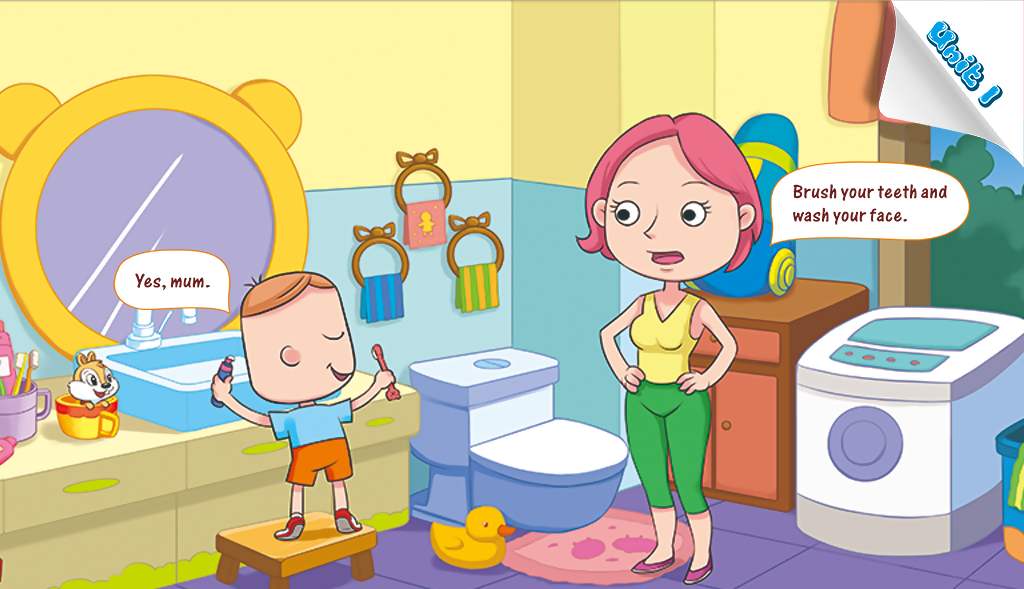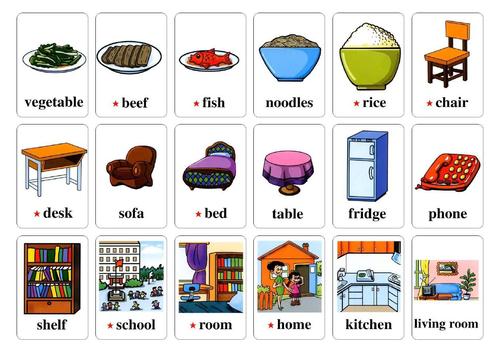七年级英语知识点1
1、Good morning/ afternoon / evening早上/下午/晚上好
Good night 晚安(晚上告别)
2、glad / nice to meet / see you 见到你很高兴(回答也一样)
3、 welcome to + 地点欢迎来到…… (回答:Thank you 或者Thanks)
4、 let’s + V(原) 让我们做……
5、 stand up 起立sit down 坐下
6、 this is ... -这是…… (用于介绍第三者的用语)
7、 How do you do ?你好 (回答也是:How do you do ? )
8、 How are you ? 你好吗? Fine, thank you, and you?很好;谢谢;你呢?
I’m OK / I’m fine, too. 我也很好。
9、see you = see you later = see you soon =good-bye 再见
10、excuse me打扰一下;请问
11、 I’m … = my name is …我是……
12、be from = come from 来自
13、in English 用英语
14、Can you spell it ? Yes /No 你能拼写它吗? 能/不能
15、That’s OK / That’s all right / You’rewelcome / Not at all不用谢
16、…… years old ……岁
17、ewtelephone number 电话号码 QQnumber QQ号码 ID number 身份证
18、the same (相同的) 反义词是 different (不同的)
例: We are in the same grade, but we are indifferent classes.
句型:
1. What is yourname?你的名字是什么?
2. Where +be + 主语 + from? 或者
Where +助动词(do/does)+主语+come from?
某人来自于哪里?(回答:主语+be+地点)
Where are you from? =Where do you come from?
回答:I am from Zhaoqing. =I come from Zhaoqing.
3. How old + be + 主语?某人几岁? (回答:主语 + be + 数字 )
例: How old are you? I’m fourteen (years old).
4. What is your telephonenumber? 你的电话号码是多少?
(回答:My telephone number is ... 或者It’s ... )
注意:读出号码的时候要逐个读出。
5. What class / grade +be + 主语 + in ? 某人在哪一个班级/年级?
例:What class are you in? Iam in Class Five.
What grade are you in? Iam in Grade Seven.(注意大写)
6. What’s this/ that (in English) ?这是什么?(回答:It’s a/an +单数名词. 这是……)
What’ re these/ those (in English) ? 这些是什么?(回答:They’re + 复数名词 这些是……)
7. How do you spell it ?你怎么拼写它? E-R-A-S-E-R, eraser.(注意拼读方法)
七年级英语知识点归纳2
1、sb + has/ have ( an /a ) + adj + 五官=== sb’s 五官 is /are + adj (描述长相)
例:Lily has a small nose. = Lily’s nose is small.
2、 I know = I see 我明白了
3、 That’s right 那是对的/对了
4、 look the same look like 看起来相像look different 看起来不同
例: Jim and Lilei look the same.== Jim looks like Lilei. .
5、 look at + n看某物 look for +n 寻找某人/某物 look after +n 照顾某人
6、 both 两者都…… all 三者或者三者以上都……
Both 和 all位于 be动词或情态动词后,位于行为动词前。
例: We are both students.We both have black eyes. We can both speak English.
7、give sth to sb = give sb sth把某物给某人; (注意:如果sth是it或them,只能用前者)
8、have different looks ==look different有着不同的长相 (看起来不相像)
havethe same look. ==look the same 有着相同的长相 (看起来很相像)
9、 over there在那边come in 请进go out 出去
10、 in + 颜色 或 in a/an/the +颜色 + 衣服表示穿着……颜色的衣服
常常接在名词的后面,表示穿 ...颜色衣服的…… 如 the girl in red is my sister.
11、 too + adj太……
12、 pants 和 shoes 做主语,谓语动词用复数;但a pair of pants/ shoes作主语时,谓语动词用单数形式
例: His shoes are black.A pair of shoes is under the bed.
13、 in the morning/ afternoom/evening 在早上/下午/晚上at night 在晚上
14、 go shopping = go to the shop=goto do some shopping 去购物
类似的有 go swimming go fishing go skating 等等
15、 help sb. ( to ) do sth == help sb with sth帮助某人做某事注意:sb 用代词时必须用宾格
16、 high school 中学
17、 play +球类play the 乐器
18、 think of 认为,想 think about 考虑 I think + 从句 我认为……
I think he you are right.否定式常否定主句,但翻译时要否定后面的从句
例:I don’t think he can come. 我认为他不会来了.(不能说:我不认为他会来)
句型:
1、 What do/does + 主语 + looklike ? 询问人的长相
例: What does your English teacher look like ?
2、 What’s ... -and ... --?……加……是什么?(回答:It’s ... --)
例:What’s red and yellow? It’s orange.
What’s two and five? It’s seven.
3、 Whose + 东西 + isthis/ that ?Whose + 东西 +are these/those ? 这/这些是谁的……?
例:Whose coat is this ? It is mine.
Whose shoes are these ? They are hers.
4、 Who is the letter from?这封信来自于谁?
It’s from Lily. 它来自于莉莉。
5、 What color be + 东西? (回答:It’s +颜色或者 They’er + 颜色)
例:What color is your dress? It’s black.
七年级英语知识点归纳3
1、 Could you (please)…… (后接动词原形)你愿意做某事吗?
May I…… (后接动词原形)我能做某事吗?
2、the English corner 英语角
3、 live in + 地点 住在某地 live with + 人和某人住在一起
4、 What does he say in the letter?他在信里说了些什么?
What does he say on the photo? 他在电话里说了些什么?
5、 alot = very much 放在句末,修饰动词,非常……
例: I like the boy a lot/ very much.
not at all 一点也不……
例: I don’t like the boy at all..
6、 each other 相互,彼此students often talk to each other in class.
7、 do sth with sb和某人一起做某事
8、 No problem 没问题
9、 speak + 语言说某种语言 speak Englishspeak Chinese
10、 the Great Wall 长城
11、come/go to + 地点 去某地 但home 、 here 、 there 这些是副词,前面不能加to
例:go home / come here / go there
go to do sth 去做某事 例: They go to play basketball.
12、 like doingsth 喜欢做某事 = like to do sth 想要做某事
13、It’s + adj +to sb 对某人来说是……的
14、help sb with sth =help sb (to) do sth帮助某人某事
15、 be at home = be in 在家go home 回家 get home到家 in one’s home 在某人的家里
16、have a seat / take a seat / sit down请坐下
17、office worker办公室职员 cook 厨师 cooker炊具
18、on a farm在农场上 on the sofa 在沙发上
19、a photo of one’s family 某人的全家照 Family Tree 家谱(首字母都大写)
20、 in a hospital 在医院(纯属地点概念) inhospital 因病住院
例:He is ill in hospital. 他生病住院 Heis in a hospital.他在医院里 (不一定是因为生病来到医院)
21、 look after sb = take care of sb 照顾某人
22、 teach sb sth = teach sth to sb教某人某东西
teach sb to do sth 教某人做某事
21、 help oneself ( to sth. ) 请随便(吃……) help yourself/ yourselves (tofish)
22、 I’d like sth = I would like sth. 我想要……
24、 Would like to do sth = want to do sth 想要做某事
25、 Would you like something to eat (drink)? 你想要一些吃(喝)的东西吗?
to eat 或 to drink 修饰something,作为后置定语。
26、 Here you are . 给你Here we are. 我们到了
27、 What about …… == Howabout …… ……怎么样?
后接代词或名词,还可以接动名词(即 What about doing sth )
28、 all right 好的
29、 a cup of tea 一杯茶 two cups of tea 两杯茶
30、 milk for me 我要牛奶
31、 Why not ……(后接动词原形) = Why don’t you …… (后接动词原形)为什么不做某事呢?
回答:Goodidea好主意;
32、 May I take your order? 可以点菜了吗?
33、 wait a moment = just a moment = wait a minute(second) 等一下,请稍侯 wait for sb 等待某人
34、 Can I help you ?= May I help you ?= What can I do for you ? 需要点什么帮忙吗?
35、 eat out 出去吃饭
36、 let sb do sth让某人做某事
37、 have dinner/ breakfast/lunch/supper吃正/早/午/晚餐
38、 a kind of 一种…… all kinds of各种各样的……
39、 be friendly/kind to sb对某人友好
40、 such as 例如例:I likefruits, such as oranges,bananas and apples
41、be glad to do sth例: I am glad to meet you,I am glad to behere..
句型:
1、 What do/does + 主语+ do ? == What +be+ 主语. ? == What’s one’s job ?
回答:主语 + be + 职业.
例如: What does your father do? = What is your father? = What’s your father’s job?
He is a teacher.
七年级英语上册知识点归纳(四)
1、 try on 试穿……
2、 we/I will take it我们/我买下了(这里的take 相当于buy)
3、 buy sth for sb = buy sb sth给某人买某物;
4、 I’m just looking我只是看看;
5、three hundred and sixty-five365(百位数和十位数之间加and , 十位数和个位数之间加”-“)
6、 a pair of一对/一双……
7、 running shoes跑鞋
8、 Are you kidding ? 你开玩笑吧;
9、 think about 考虑;
10、thank you all the same 仍然谢谢你;
11、Is that all? 就这么多吗? That’s all. 就这么多吧
I2、 I think so. 我认为是这样的. Idon’t think so. 我认为不是这样的.
13、 当把东西给某人时可以说: Here you are 或 Here be + 东西 或Here it is.
14、Don’t worry.别担心① worry about + 宾语 如:Do you worry about your leesson?
②Worried 烦恼的 be worried about +宾语如:She is worried about her mother.
15. a few +可数名词 (肯定);一点,一些;
few + 可数名词:(否定) 几乎没有
a little +不可数名词(肯定);一点,一些;
little + 不可数名词:(否定) 几乎没有
16、be free = have time 有空的;反义词:be busy = have no time
I have no time. = Idon’t have any time. She has no time. =She doesn’t have any time.
Areyou free tomorrow? == Do you have time tomorrow ?
17、在某一天使用介词on , 在某个时刻用at 如:On Sundayat a half past six
当this 接时间,不用介词, this Sunday
18、What’s up = what’s wrong ? = What’s the matter 什么事?
19、 forget to do sth.忘记去做某事(事还没做)
forget doing sth忘记曾做过某事(事已做完)
20、 tell sb about sth. 告诉某人某事 tell sb sth = tell sth to sb 把某事告诉某人
ask/tell sb to do sth 叫某人做某事
否定形式:ask/tell sb not to do sth 叫某人不要做某事
21、 电话用语: ①Who’s this? 你是哪位? ② Is this ……你是……吗?
③This is ……(speaking)我是……④May I speak to……我可以找……吗?
22、 go for sth = go to do sth 去做某事如: go for to have class.
23、 It’s fun真是有趣的事
24、 call sb = give sb a call打电话给某人 call sb back 给某人回电话
25、 I’m afraid /sorry (that) + 从句恐怕……/ 对不起,……
26、 I have no time =I don’t have any time 我没有时间( no = not any )
27、 be not in = be not at home = be out 出去了,不在家;
28、 sing a song / sing some songs 唱歌;
fly a kite放风筝;draw picture 画画
play sports 做运动; watch TV 看电视
read books 看书 read newspaper看报纸
29、 let sb do sth (后接动词原形) 让某人做某事
30、 时间读法有顺读法和逆读法: 顺读法(eleven thirty-six 表示11:36)
逆读法(分钟数小于等于30分用 past ,
分钟数大于30分用to,如 five past ten 表示 10:05;five to ten 表示 9:55,
half past six 表示6:30 , a querter to six 表示 5:45)
31、 show sth to sb = show sb sth 把……拿给某人看; 作为名词表示演出,表演
32、祈使句的否定句,直接在句首加上Don't 就可以了
33、have to =must ……(后接动词原形) 不得不/必须……
48.It’s time for (doing) sth It’s time to do sth该到做……的时候了?
It’s time for sb to do sth 是某人做某事的时候了
33、 next time下一次 next week 下个星期the next day第二天;
34、 next to…… = near……在……旁边
35、 get up起床go to bed 上床睡觉; getsb up 叫某人起床
36、 doone’s homework做作业;
37、 have a picnic 野餐;have class 上课 have a meeting 开会 have a party 举办聚会
have dinner/ breakfast /lunch/supper吃正/早/午/晚餐 have +东西 吃/喝……
have a good time =enjoy oneself 玩得很愉快 have sb to do sth 让某人做某事
have to do sth 不得不……
38、on the weekday 在周末;
39、lot of = lots of = many =much 许多的,大量的
40、in the sun 在阳光下;
41、sb like --- best = sb’s favorite + 种类 is/ are …… 谁最喜欢……
42、 on one’s way to ... 在某人去……的路上;on one’s way home在某人回家的路上
43、 Here we are. 我们到了
44、 It’s very kind of you 你真是太好了;
45、 thanks / thank you for + n/v-ing 为……而感谢你;
46、. in the tree 在树上(外物附着) onthe tree在树上(树上本身长出的东西)
In the wall 在墙里(如 window ) on the wall 在墙上
句型:
1、 What do you think of ... ? = Howdo you like ... ? 你认为……怎么样?
例:What do you think of your English teacher ? == Howdo you like your English teacher ?
2、 How much be + 主语? ( 回答:It’s / They’re + 价钱.)
How much is your English book ?
问价格还可以用 what’s the price of ……
3、Why not ……(后接动词原形) = Why don’t you …… (后接动词原形)为什么不做某事呢?
回答:Good idea好主意;
4、 What time is it ? == What is the time? (回答:It’s +时间)
七年级上册英语学习方法与技巧
一、课前预习
预习的过程是个人独立阅读和思考的过程,它能促使同学们自己查阅有关资料、查阅字典,从而减少盲目性,提高听课质量。
二、争取课内外各种机会多练习英语1、学会听别人说2、大胆和别人交谈。学习英语必须在“听”中提高自己,在“说”中检测自己。把听到的,找机会向你的同学、朋友、老师“卖弄”一下;当你体会到成功的喜悦时,那些曾让你感到枯燥的句型、课文,就会一下子变得亲切而有意义了。“听说”要注意以下两点:(1)磁带要选对,要选难度适合自己的。听的时间要有保证:每天听半小时。应该说,听纯正、地道的语音、语调,就是一种享受。(2)听要一句一句地听,说也要一句一句地说。不要求快。要反复听,反复说,直到听懂每一个词,说好每一句才行。练习可以起到一石三鸟的效果:既巩固了语言知识,提高了听力水平,又实现了口语运用。
三、专心听课
用心识记上课时应做到:眼到、口到、手到、心到。努力在课内有目标有意识地去识记该课的生词、短语、句型、重点句子。强迫自己在课内记住这节课最重要的内容,这样,使自己真正体会到“这节课学到不少东西”的踏实感、成就感,进而激发动机,提高兴趣,更有信心去迎接今后的学习。
四、勤记笔记
课堂上做笔记可以帮助集中注意力,理顺思路,增进记忆,锻炼分析归纳、综合概括以及快速反应的能力。笔记也为日后复习提供记忆纲要。
五、
1.单词的记忆
其实英语的学习历来都把单词的学习作为重点,初中也不例外。我们一定要记住,单词记忆切忌孤立地,单纯地背诵单词。我们中学最习惯的背诵方法就是背拼写,比如what这个单词我们一般都是这么背whatwhat,这样只是记住了几个孤立的字母而并没有记住单词,过不了几天就会把这个单词忘掉。那么我们就要把单词放在一个整体或者环境中背诵,比如我们不如记住下面一句话:Whatisyourname?(你的名字叫什么)那么就不容易忘掉了。也就是说每记一个单词都要相应地记住用这个单词在内的一个例句,因为单词的意思只能在句子中体现,有意思我们才不容易忘掉,而孤立的无意思的不容易记住。另外记忆单词要利用一切可能的办法去记住,比如分类记忆:我们把动物的有关词汇放在一起,把有关校园的有关词汇放在一起,或者天文,地理,等等。当然我们也可以利用谐音的方法自己编写些小段子记住单词。
2.语法的学习
初中是开始学习系统语法知识的重要阶段。这阶段语法学习好了,以后语法就会感到很轻松。首先应该明确是初中的时候我们学习的更多的是词法而不是句法,因为毕竟从简单开始吧,就算是中考题也基本上没有多少句法的题,所以初中一定要把重心放在词法上,就是名词,介词,冠词,代词,形容词等上面,而这些东西是最零碎的也是最头疼的,我们就更要有细心和耐心。建议每学习一个语法点,在学校教室里抄过一遍笔记后,回家静下心来,再重新整理一遍笔记,去粗取精,这其实是回顾温习的过程,并且要做好分类,不同重要程度的或者难易程度的要用不同的颜色区别对待,并时常翻阅。此外课堂上的语法知识往往和教材同步而并不系统,我们还可以再有一本语法书籍,甚至可以买高中语法,这样有知识的拓展。
3.文章的学习
现在的教材文章普遍较难。所以阅读文章难度是相当大的。学生在学习文章前一定要预习老师即将要讲的内容,事先把自己认为比较难的单词语法和句子划出来,这样就可以有的放矢。课本上的文章一定要精读,不能说看懂了就可以,而是要把每一个重要的单词和句子都要吃透。同时对文章中的经典词汇和段落要记笔记,甚至要会背诵,为后面的写作打基础。加强英语学习,阅读是重点,课堂上的文章太过教条和局限,可能缺乏生动性和乐趣性。因此课后也要多读些课外文章。建议读些国内出版的浅显的英语文章,比如象“英语沙龙初级版”英汉对照着看,一定会有兴趣和提高。
4.写作的学习
写作学习请大家牢牢记住下面两句话。“读书破万卷,下笔如有神”,“熟读唐诗三百首,不会做诗也会吟”,强大的阅读功底是写出好文章的保证,只有输入得多了才能输出得多,因此一定要多读课外文章还有精读文章。在具体联系方面,我们并不需要写太多字数的文章。因为初中生的作文并不需要写太复杂的句子。仅仅是简单句子的结合,所以说中学生的作文不叫真正意义上的作文,而是叫写话。所以鉴于上述,我觉得英汉互译写句子是最好的写作文的方法,把每句话成功的写出来,再结合起来就是一篇好的作文了。
七年级上册英语知识点梳理
一、48个国际音标及26个英文字母的正确书写
要熟练掌握元音和辅音,5个元音字母(a, e, i, o, u),字母的正确占格及单词间距。
二、be动词的用法 be动词有三种变形,分别是:am, is, are。记忆口诀:
“我”用am, “你”用are, is用于“他、她、它”;单数全都用is,复数全部都用are。
三、人称及人称代词的不同形式(主格和宾格)
1、三种人称:第一人称(I, we),第二人称(you, you),第三人称(he, she, it, Maria)。
2、人称代词的主格,即人称代词位于句子主语位置时的形态:I, We, You, You, He, She, It, Maria。
3、人称代词的宾格,即人称代词位于句子宾语位置时的形态:me, us, you, you, him, her, it。
4、形容词性物主代词:my, our, your, your, his, her, its, their。
5、名词性物主代词:mine, ours, yours, yours, his, hers, its, theirs。
6、反身代词:myself, ourselves, yourself, yourselves, himself, herself, itself, themselves。
四、基数词(表示数量多少的词,大致相当于代数里的自然数)
zero, one, two, three, four, five, six, seven, eight, nine, ten, eleven, twelve, thirteen, fourteen, fifteen, sixteen, seventeen, eighteen, nineteen, twenty, twenty-one, twenty-two, twenty-three,twenty-four, twenty-five, twenty-six, twenty-seven, twenty-eight, twenty-nine, thirty, forty, fifty, sixty,seventy, eighty, ninety, one hundred,one hundred and one。
一、一般疑问句及特殊疑问句
1、一般疑问句:能用Yes或No来回答的问句。一般疑问句句尾读升调。
2、特殊疑问句:不能用Yes或No来回答的问句。特殊疑问句句尾读降调。
二、可数名词变复数 可数名词变复数时,有规则变化和不规则变化两种。
1、规则变化:
1)一般情况直接在词尾加“-s ”,如:cake-cakes, bag-bags, day-days, face-faces, orange-oranges等;
2)以s, x, sh, ch结尾的词,要在词尾加“-es ”,如:bus-buses, watch-watches, box-boxes等;
3)以辅音字母加y结尾的词,变y为i再加“-es ”,如:baby-babies, country-countries, family-families等;
4)部分以f (e)结尾的词,变f (e)为“ves ”,如:knife-knives, half-halves等; 5)以o结尾的词,加“-s ”或“-es ”,如:zoo-zoos, photo-photos, tomato-tomatoes, potato-potatoes等。记忆口诀:除了“英雄”hero外,凡是能吃的,加“-es ”,不能吃的加“-s ”。
2、不规则变化: 1)改变单数名词中的元音字母:man-men, woman-women, foot-feet, tooth-teeth等;
2)单、复同形:sheep-sheep, Chinese-Chinese, Japanese-Japanese等;
3)其他形式:mouse-mice, child-children等。 三、简单句的成分及主谓一致原则 最基本构成:主语+谓语+宾语,其中谓语由动词来充当。 主谓一致原则,就是句子的谓语要始终与主语保持数量上的`一致性。当主语是第三人称单数(简称“三单”)时,谓语动词也要相应变成单数形式;当主语非“三单”时,谓语动词就用原形。实意动词变“三单”的规则如下:
1)一般动词在词尾加“-s ”,如:like-likes, tell-tells, play-plays等;
2)以字母s, x,ch, sh结尾的动词加“-es ”,如:guess-guesses, teach-teaches, watch-watches等;
3)以o结尾的动词一般加“-es ”,如:do-does, go-goes等;
4)以辅音字母加y结尾的动词,先变y为i,再加“-而是”,如:fly-flies, carry-carries等;
5)have的三单形式是has。
四、冠词的用法(名词前面必须要有冠词)
冠词分为定冠词(the)和不定冠词(a, an)两种。
1、定冠词the表示“特指”,可译为“这个”、“那个”、“这些”、“那些”。
2、不定冠词a, an用来表明(可数)名词的数量是“一个”。an用于以元音开头(注意不是以元音字母开头)的单词前,a则英语非元音开头的单词前。
3、不定冠词a, an与基数词one的区别是:不定冠词不是刻意强调“数量”,而基数词则强调“数量”。



